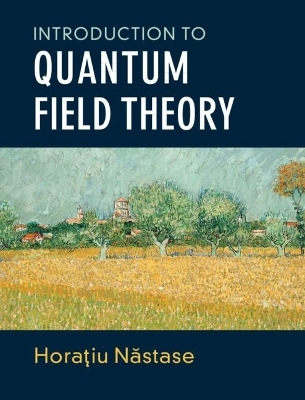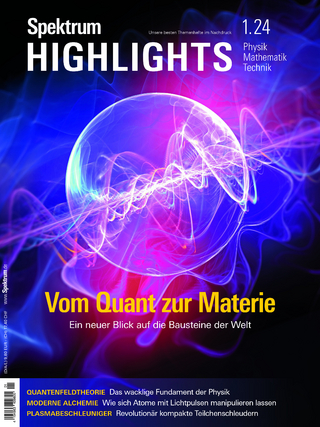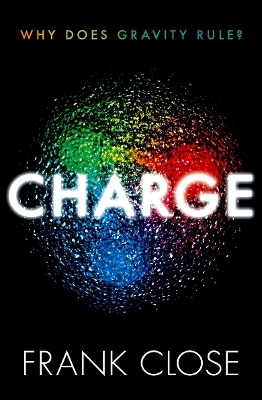
Introduction to Quantum Field Theory
Cambridge University Press (Verlag)
978-1-108-49399-4 (ISBN)
Quantum Field Theory provides a theoretical framework for understanding fields and the particles associated with them, and is the basis of particle physics and condensed matter research. This graduate level textbook provides a comprehensive introduction to quantum field theory, giving equal emphasis to operator and path integral formalisms. It covers modern research such as helicity spinors, BCFW construction and generalized unitarity cuts; as well as treating advanced topics including BRST quantization, loop equations, and finite temperature field theory. Various quantum fields are described, including scalar and fermionic fields, Abelian vector fields and Quantum ElectroDynamics (QED), and finally non-Abelian vector fields and Quantum ChromoDynamics (QCD). Applications to scattering cross sections in QED and QCD are also described. Each chapter ends with exercises and an important concepts section, allowing students to identify the key aspects of the chapter and test their understanding.
Horaƫiu Năstase is a Researcher at the Institute for Theoretical Physics at the Universidade Estadual Paulista, São Paulo. To date, his career has spanned four continents. As an undergraduate he studied at the Universitatea din București and Københavns Universitet. He later completed his Ph.D. at the State University of New York, Stony Brook, before moving to the Institute for Advanced Study, Princeton University, New Jersey, where his collaboration with David Berenstein and Juan Maldacena defined the pp-wave correspondence. He has also held research and teaching positions at Brown University, Rhode Island and the Tokyo Institute of Technology. His other books include Introduction to the AdS/CFT Correspondence (Cambridge, 2015), String Theory Methods for Condensed Matter Physics (Cambridge, 2017) and Classical Field Theory (Cambridge, 2019).
1. Review of classical field theory; 2. Quantum mechanics; 3. Canonical quantization of scalar fields; 4. Propagators for free scalar fields; 5. Interaction picture and wick theorem for Λφ4 in operator formalism; 6. Feynman rules for Λφ4 from the operator formalism; 7. The driven (forced) harmonic oscillator; 8. Euclidean formulation and finite temperature field theory; 9. The Feynman path integral for a scalar field; 10. Wick theorem for path integrals and Feynman rules part I; 11. Feynman rules in X-Space and P-Space; 12. Quantization of the Dirac field and Fermionic path integral; 13. Wick theorem, Gaussian integration and Feynman rules for fermions; 14. Spin sums, Dirac field bilinears and C,P,T symmetries for fermions; 15. Dirac quantization of constrained systems; 16. Quantization of gauge fields, their path integral, and the photon propagator; 17. Generating functional for connected Green's Functions and the effective action (1PI Diagrams); 18. Dyson–Schwinger equations and ward identities; 19. Cross sections and the S-Matrix; 20. The S-matrix and Feynman diagrams; 21. The optical theorem and the cutting rules; 22. Unitarity and the largest time equation; 23. QED; 24. Nonrelativistic processes; 25. E+E− → L¯ L unpolarized cross section; 26. E+E− →L¯ L polarized cross section; 27. (Unpolarized) Compton scattering; 28. The Helicity Spinor formalism; 29. Gluon amplitudes, the Parke–Taylor formula and the BCFW construction; 30. Review of path integral and operator formalism and the Feynman diagram expansion; 31. One-loop determinants, vacuum energy and zeta function regularization; 32. One-loop divergences for scalars; 33. Regularization, definitions; 34. One-loop renormalization for scalars and counterterms in dimensional regularization; 35. Renormalization conditions and the renormalization group; 36. One-loop renormalizability in QED; 37. Physical applications of one-loop results 1. Vacuum Polarization; 38. Physical applications of one-loop results 2. Anomalous magnetic moment and lamb shift; 39. Two-loop example and multiloop generalization; 40. The LSZ reduction formula; 41. The Coleman–Weinberg mechanism for one-loop potential; 42. Quantization of gauge theories I; 43. Quantization of gauge theories II; 44. One-loop renormalizability of gauge theories; 45. Asymptotic freedom. BRST symmetry; 46. Lee–Zinn–Justin identities and the structure of divergences (formal renormalization of gauge theories); 47. BRST quantization; 48. QCD; 49. Parton evolution and Altarelli-Parisi equation; 50. The Wilson Loop and the Makeenko–Migdal Loop equation. Order parameters; 'T Hooft Loop; 51. IR divergences in QED; 52. IR safety and renormalization in QCD; General IR-factorized form of amplitudes; 53. Factorization and the Kinoshita–Lee–Nauenberg theorem; 54. Perturbatives anomalies; 55. Anomalies in path integrals – the Fujikawa method; 56. Physical applications of anomalies, 'T Hooft's UV-IR anomaly matching conditions, anomaly cancellation; 57. The Froissart Unitarity Bound and the Heisenberg Model; 58. The operator product expansion, renormalization of composite operators and anomalous dimension matrices; 59. Manipulating loop amplitudes; 60. Analyzing the result for amplitudes; 61. Representations and symmetries for loop amplitudes; 62. The Wilsonian effective action, effective field theory and applications; 63. Kadanoff blocking and the renormalization group; 64. Lattice field theory; 65. The Higgs Mechanism; 66. Renormalization of spontaneously broken gauge theories I; 67. Renormalization of spontaneously broken gauge theories II; 68. Pseudo-Goldstone bosons, nonlinear sigma model and Chiral perturbation theory; 69. The background field method; 70. Finite temperature quantum field theory I; 71. Finite temperature quantum field theory II; 72. Finite temperature quantum field theory III.
| Erscheinungsdatum | 18.10.2019 |
|---|---|
| Zusatzinfo | Worked examples or Exercises; 5 Line drawings, black and white |
| Verlagsort | Cambridge |
| Sprache | englisch |
| Maße | 195 x 253 mm |
| Gewicht | 1720 g |
| Themenwelt | Naturwissenschaften ► Physik / Astronomie ► Hochenergiephysik / Teilchenphysik |
| Naturwissenschaften ► Physik / Astronomie ► Quantenphysik | |
| Naturwissenschaften ► Physik / Astronomie ► Thermodynamik | |
| ISBN-10 | 1-108-49399-8 / 1108493998 |
| ISBN-13 | 978-1-108-49399-4 / 9781108493994 |
| Zustand | Neuware |
| Haben Sie eine Frage zum Produkt? |
aus dem Bereich


